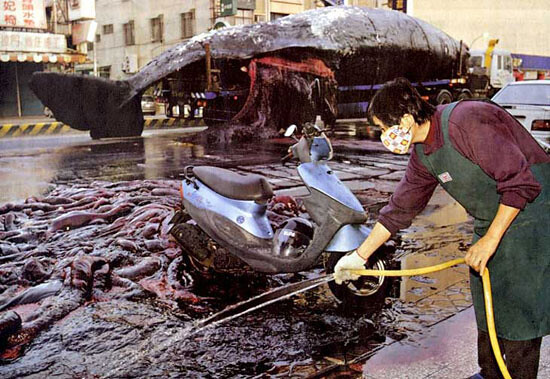Tout se résume dans l’Esthétique et l’Économie politique. Everything comes down to Aesthetics and Political Economy. Mallarmé’s aphorism is my starting point for considering accelerationist aesthetics.1 I think that aesthetics exists in a special relationship to political economy, precisely because aesthetics is the one thing that cannot be reduced to political economy. Politics, ethics, epistemology, and even ontology are all subject to “determination in the last instance” by the forces and relations of production. Or rather, if ontology is not entirely so determined, this is precisely to the extent that ontology is itself fundamentally aesthetic. If aesthetics doesn’t reduce to political economy, but instead subsists in a curious way alongside it, this is because there is something spectral, and curiously insubstantial, about aesthetics.
Kant says two important things about what he calls aesthetic judgment. The first is that any such judgment is necessarily “disinterested.” This means that it doesn’t relate to my own needs and desires. It is something that I enjoy entirely for its own sake, with no ulterior motives, and with no profit to myself. When I find something to be beautiful, I am “indifferent” to any uses that thing might have; I am even indifferent to whether the thing in question actually exists or not. This is why aesthetic sensation is the one realm of existence that is not reducible to political economy.


Of course, this doesn’t mean that I am actually liberated by art from worldly concerns. The constraints of political economy can, and do, get in the way of aesthetics. A starving person is blocked from full aesthetic enjoyment. It is only when I am generally well fed that I enjoy delicacies of cuisine. And it is only from a position of safety, Kant says, that I can enjoy sublime spectacles of danger. Beauty in itself is inefficacious. But this also means that beauty is in and of itself utopian. For beauty presupposes a liberation from need; it offers us a way out from the artificial scarcity imposed by the capitalist mode of production. However, since we do in fact live under this mode of production, beauty is only a “promise of happiness” (as Stendhal said) rather than happiness itself. Aesthetics, for us, is unavoidably fleeting and spectral. When time is money and labor is 24/7, we don’t have the luxury to be indifferent to the existence of anything. To use a distinction made by China Miéville, art under capitalism at best offers us escapism, rather than the actual prospect of escape.
The second important thing that Kant says about aesthetic judgment is that it is non-cognitive. Beauty cannot be subsumed under any concept. An aesthetic judgment is therefore singular and ungrounded. Aesthetic experience has nothing to do with “information” or “facts.” It cannot be generalized, or transformed into any sort of positive knowledge. How could it, when it doesn’t serve any function or purpose beyond itself? And this, again, is why aesthetic sensation seems spectral to us, and even epiphenomenal. It cannot be extracted, appropriated, or put to work.
Analytic philosophers of mind, frustrated by this impossibility, have spent decades trying to argue that aesthetic experience—or what they more often call “inner sensation,” or the experience of “qualia,” or “consciousness” tout court—doesn’t really exist. As Wittgenstein famously phrased it: “A wheel that can be turned though nothing else moves with it, is not part of the mechanism.”2 Later thinkers have transformed Wittgenstein’s puzzlement about inner experience into dogmatic denial that it can be anything other than an illusion. But the basic point still stands. Aesthetics marks the strange persistence of what (to quote Wittgenstein again) “is not a Something, but not a Nothing either!”3 Aesthetic experience is not part of any cognitive mechanism—even though it is never encountered apart from such a mechanism.


What is the role of aesthetics, then, today? I said that beauty cannot be subsumed; yet we live in a time when financial mechanisms subsume everything there is. Capitalism has moved from “formal subsumption” to “real subsumption.” These terms, originally coined in passing by Marx, have been taken up and elaborated by thinkers in the Italian Autonomist tradition, most notably Michael Hardt and Antonio Negri. For Marx, it is labor that is “subsumed” under capital. In formal subsumption, capital appropriates, and extracts a surplus from, labor processes that precede capitalism, or that at the very least are not organized by capitalism. In real subsumption, there is no longer any such autonomy; labor itself is directly organized in capitalist terms (think of the factory and the assembly line).4
In Hardt and Negri’s expanded redefinition of “subsumption,” it isn’t just labor that is subsumed by capital, but all aspects of personal and social life. This means that everything in life must now be seen as a kind of labor: we are still working, even when we consume, and even when we are asleep. Affects and feelings, linguistic abilities, modes of cooperation, forms of know-how and of explicit knowledge, expressions of desire: all these are appropriated and turned into sources of surplus value. We have moved from a situation of extrinsic exploitation, in which capital subordinated labor and subjectivity to its purposes, to a situation of intrinsic exploitation, in which capital directly incorporates labor and subjectivity within its own processes.
This means that labor, subjectivity, and social life are no longer “outside” capital and antagonistic to it. Rather, they are immediately produced as parts of it. They cannot resist the depredations of capital, because they are themselves already functions of capital. This is what leads us to speak of such things as “social capital,” “cultural capital,” and “human capital”: as if our knowledge, our abilities, our beliefs, and our desires had only instrumental value, and needed to be invested. Everything we live and do, everything we experience, is quickly reduced to the status of “dead labour, that, vampire-like, only lives by sucking living labour, and lives the more, the more labour it sucks.”5 Under a regime of real subsumption, every living person is transformed into a capital stock that must not lie fallow, but has to be profitably invested. The individual is assumed—and indeed compelled—to be, as Foucault puts it, “an entrepreneur, an entrepreneur of himself … being for himself his own capital, being for himself his own producer, being for himself the source of [his] earnings.”6


This process of real subsumption is the key to our globalized network society. Everything without exception is subordinated to an economic logic, an economic rationality. Everything must be measured, and made commensurable, through the mediation of some sort of “universal equivalent”: money or information. Real subsumption is facilitated by—but also provides the impetus for—the revolutionization of computing and communication technologies over the course of the past several decades. Today we live in a digital world, a world of financial derivatives and big data. Virtual reality supplements and enhances physical, “face-to-face” reality—rather than being, as we used to naively think, opposed to it. Neoliberalism is not just the ideology or belief system of this form of capitalism. It is also, more importantly, the concrete way in which the system works. It is an actual set of practices and institutions. It provides both a calculus for judging human actions, and a mechanism for inciting and directing those actions.
What does this mean for aesthetics? The process of real subsumption requires the valuation, and evaluation, of everything: even of that which is spectral, epiphenomenal, and without value. Real subsumption leaves no aspect of life uncolonized. It endeavors to capture, and to put to work, even those things that are uneconomical, or “not part of the mechanism.” Affect and inner experience are not exempt from this process of subsumption, appropriation, and extraction of a surplus. For capitalism now seeks to expropriate surplus value, not just from labor narrowly considered, but from leisure as well; not just from “private property,” but also from what the Autonomists call “the common”; and not just from palpable things, but also from feelings and moods and subjective states. Everything must be marketed and made subject to competition. Everything must be identified as a “brand.”
This leads to a veritable Kantian Antinomy of the aesthetic under late capitalism. Aesthetics must be simultaneously promoted beyond all measure, and yet reduced to nothing. On the one hand, as Fredric Jameson noted long ago,
aesthetic production today has become integrated into commodity production generally: the frantic economic urgency of producing fresh waves of ever more novel-seeming goods (from clothing to airplanes), at ever greater rates of turnover, now assigns an increasingly essential structural function and position to aesthetic innovation and experimentation.7
Or as the free market economist Virginia Postrel cheerily and uncritically puts the same argument, “aesthetics, or styling, has become a unique selling point—on a global basis.”8 In today’s capitalism everything is aestheticized, and all values are ultimately aesthetic ones.
Yet at the same time, this ubiquitous aestheticization is also a radical extirpation of the aesthetic. It’s not just that sensations and feelings are trivialized when they are packaged for sale and indexed upon the most minute variations of product lines. It’s also that the two most crucial qualities of the aesthetic according to Kant—that it is disinterested, and that it is non-cognitive—are made to vanish, or explained away. Aesthetic sensations and feelings are no longer disinterested, because they have been recast as markers of personal identity: revealed preferences, brands, lifestyle markers, objects of adoration by fans. Aesthetic sensations and feelings are also ruthlessly cognized: for it is only insofar as they are known and objectively described, or transformed into data, that they can be exploited as forms of labor, and marketed as fresh experiences and exciting lifestyle choices. Ironically, then, it is precisely in a time when “affective labor” is privileged over material production (Hardt and Negri), and when marketing is increasingly concerned with impalpable commodities like moods, experiences, and “atmospheres” (Biehl-Missal and Saren), that we enter into the regime of a fully “cognitive capitalism” (Moulier Boutang), guided by the findings of cognitive psychology and cognitive philosophy of mind.9
It is under the conditions of real subsumption that accelerationism first becomes a possible aesthetic strategy. It is a fairly recent invention. In the twentieth century, before the developments that I have recounted, the most vibrant art was all about transgression. Modernist artists sought to shatter taboos, to scandalize audiences, and to pass beyond the limits of bourgeois “good taste.” From Stravinsky to the Dadaists, from Bataille to the makers of Deep Throat, and from Charlie Parker to Elvis to Guns N’ Roses, the aim was always to stun audiences by pushing things further than they had ever been pushed before. Offensiveness was a measure of success. Transgression was simply and axiomatically taken to be subversive.
But this is no longer the case today. Neoliberalism has no problem with excess. Far from being subversive, transgression today is entirely normative. Nobody is really offended by Marilyn Manson or Quentin Tarantino. Every supposedly “transgressive” act or representation expands the field of capital investment. It opens up new territories to appropriate, and jump-starts new processes from which to extract surplus value. What else could happen, at a time when leisure and enjoyment have themselves become forms of labor? Business and marketing practices today are increasingly focused upon novelty and innovation. More rapid turnover is one way to combat what Marx called the tendential fall of the rate of profit. Far from being subversive or oppositional, transgression is the actual motor of capitalist expansion today: the way that it renews itself in orgies of “creative destruction.”


In other words, political economy today is driven by resonating loops of positive feedback. Finance operates according to a transgressive cultural logic of manic innovation, and ever-ramifying metalevels of self-referential abstraction. This easily reaches the point where financial derivatives, for instance, float in a hyperspace of pure contingency, free of indexical relation to any “underlying” whatsoever.10 At the same time that it floats off into digital abstraction, however, neoliberalism also operates directly on our bodies. Data are extracted from everything we feel, think, and do. These data are appropriated and consolidated, and then packaged and sold back to us.
In such a climate, nothing is more prized than excess. The further out you go, the more there is to accumulate and capitalize upon. Everything is organized in terms of thresholds, intensities, and modulations.11 As Robin James puts it, “For the neoliberal subject, the point of life is to ‘push it to the limit,’ closing in ever more narrowly on the point of diminishing returns … The neoliberal subject has an insatiable appetite for more and more novel differences.” The point is always to reach “the edge of burnout”: to pursue a line of intensification, and yet to be able to pull back from this edge, treating it as an investment, and recuperating the intensity as profit. As James says, “privileged people get to lead the most intense lives, lives of maximized (individual and social) investment and maximized return.”12
This is why transgression no longer works as a subversive aesthetic strategy. Or more precisely, transgression works all too well as a strategy for amassing both “cultural capital” and actual capital; and thereby it misses what I have been calling the spectrality and epiphenomenality of the aesthetic. Transgression is now fully incorporated into the logic of political economy. It testifies to the way that, under the regime of real subsumption, “there is nothing, no ‘naked life,’ no external standpoint … there is no longer an ‘outside’ to power.”13 Where transgressive modernist art sought to break free from social constraints, and thereby to attain some radical Outside, accelerationist art remains entirely immanent, modulating its intensities in place. As Robin James puts it, in neoliberal art, “life’s intensity, like a sine wave, closes in on a limit without ever reaching it.”14
Accelerationism was a political strategy before it became an aesthetic one. Benjamin Noys, who coined the term, traces it back to a certain “ultraleftist” turn in French political and social thought in the 1970s. Noys especially cites Deleuze and Guattari’s Anti-Oedipus (1972), Lyotard’s Libidinal Economy (1974), and Baudrillard’s Symbolic Exchange and Death (1976). These works can all be read as desperate responses to the failures of political radicalism in the 1960s (and especially, in France, to the failure of the May 1968 uprising). In their different ways, these texts all argue that, since there is no Outside to the capitalist system, capitalism can only be overcome from within, by what Noys calls “an exotic variant of la politique du pire: if capitalism generates its own forces of dissolution then the necessity is to radicalise capitalism itself: the worse the better.”15 By pushing capitalism’s own internal tensions (or what Marx called its “contradictions”) to extremes, accelerationism hopes to reach a point where capitalism explodes and falls apart.
Evidently, this strategy has not worn well in the decades following the 1970s. Indeed, it has become a classic example of how we must be careful what we wish for—because we just might get it. Starting in the 1980s, “accelerationist” policies were in fact put into effect by the likes of Ronald Reagan, Margaret Thatcher, and Deng Xiaoping. The full savagery of capitalism was unleashed, no longer held back by the checks and balances of financial regulation and social welfare. At the same time, what Luc Boltanski and Eve Chiapello call the “new spirit of capitalism” successfully took up the subjective demands of the 1960s and 1970s and made them its own.16 Neoliberalism now offers us things like personal autonomy, sexual freedom, and individual “self-realization”; though of course, these often take on the sinister form of precarity, insecurity, and continual pressure to perform. Neoliberal capitalism today lures us with the prospect of living “the most intense lives, lives of maximized (individual and social) investment and maximized return” (James), while at the same time it privatizes, expropriates, and extracts a surplus from everything in sight.
In other words, the problem with accelerationism as a political strategy has to do with the fact that—like it or not—we are all accelerationists now. It has become increasingly clear that crises and contradictions do not lead to the demise of capitalism. Rather, they actually work to promote and advance capitalism, by providing it with its fuel. Crises do not endanger the capitalist order; rather, they are occasions for the dramas of “creative destruction” by means of which, phoenix-like, capitalism repeatedly renews itself. We are all caught within this loop. And accelerationism in philosophy or political economy offers us, at best, an exacerbated awareness of how we are trapped.


By all accounts, the situation is far worse today than it was in the 1990s, let alone the 1970s. Indeed, we have moved with alarming rapidity from the neoliberal triumphalism of the 1990s to our current sense—in the wake of the financial collapse of 2008—that neoliberalism is entirely defunct as an ideology. Unfortunately, the intellectual discredit into which it has fallen does not impede its functioning in the slightest. Its programs and processes remain in full force; if anything, at the present moment they are being pushed further than ever before. The system under which we live refuses to die, no matter how oppressive and dysfunctional it is. And we double this systemic incapacity with our own inability to imagine any sort of alternative. Such is the dilemma of what Mark Fisher calls “capitalist realism”: the sad and cynical sense that “it’s easier to imagine the end of the world than the end of capitalism.”17
In this situation, what can it mean to propose an accelerationist aesthetic? Can it turn out any differently than transgression? Can it offer us anything other, or anything more, than the actually existing accelerationism of our politico-economic condition? The aesthetic case for accelerationism is perhaps best expressed by something that Deleuze wrote in an entirely different context:
It often happens that Nietzsche comes face to face with something sickening, ignoble, disgusting. Well, Nietzsche thinks it’s funny, and he would add fuel to the fire if he could. He says: keep going, it’s still not disgusting enough. Or he says: excellent, how disgusting, what a marvel, what a masterpiece, a poisonous flower, finally the “human species is getting interesting.”18
I do not think that this is an accurate evocation of Nietzsche. For Nietzsche does not really have this sort of attitude towards what he sees as the “decadent” bourgeois culture of his own time. Rather, Nietzsche is most often overwhelmed with disgust at what he sees of the world around him. His epic struggle against his own disgust, and his heroic efforts to overcome it, are at the center of Thus Spoke Zarathustra. The shrill and stridently repetitious tone of Nietzsche’s praise of cheerfulness and laughter indicates that these attitudes did not come easily to him. Nor does he tend to adopt them when confronted with the “sickening, ignoble, disgusting” spectacles of his own culture and society.
Nonetheless, I think that the attitude described by Deleuze is a good fit for accelerationist art today. Intensifying the horrors of contemporary capitalism does not lead them to explode; but it does offer us a kind of satisfaction and relief, by telling us that we have finally hit bottom, finally realized the worst. This is what really animates accelerationist movies like Mark Neveldine and Brian Taylor’s Gamer, or Alex Cox’s I’m a Juvenile Delinquent, Jail Me!. Such works may be critical, but they also revel in the sleaze and exploitation that they so eagerly put on display. Thanks to their enlightened cynicism—their finding all these “sickening, ignoble, disgusting” conditions funny—they do not offer us the false hope that piling on the worst that neoliberal capitalism has to offer will somehow help to lead us beyond it.
The difference between this aesthetic accelerationism, and the politico-economic accelerationism analyzed by Noys, is that the former does not claim any efficacy for its own operations. It does not even deny that its own intensities serve the aim of extracting surplus value and accumulating profit. The evident complicity and bad faith of these works, their reveling in the base passions that Nietzsche disdained, and their refusal to sustain outrage or claim the moral high ground: all these postures help to move us towards the disinterest and epiphenomenality of the aesthetic. So I don’t make any political claims for this sort of accelerationist art—indeed, I would undermine my whole argument were I to do so. But I do want to claim a certain aesthetic inefficacy for them—which is something that works of transgression and negativity cannot hope to attain today.
Stephane Mallarmé, La musique et les lettres, 1895.
Wittgenstein, Philosophical Investigations, trans. G.E.M. Anscombe, P.M.S. Hacker, and Joachim Schulte (Malden, MA: Blackwell, 2009), 194.
Ibid, 109.
Marx’s Capital, Vol. 1, ch. 16. See →.
Ibid., ch. 10. See →.
Foucault, The Birth of Biopolitics: Lectures at the Collège de France, 1978–1979, ed. Michel Senellart, trans. Graham Burchell (New York: Picador, 2010), 226.
Jameson, Postmodernism, or, The Cultural Logic of Late Capitalism (Durham, NC: Duke University Press, 1991), 4–5.
This statement is quoted and endorsed by Virginia Postrel in: Postrel, The Substance of Style: How the Rise of Aesthetic Value Is Remaking Commerce, Culture, and Consciousness(New York: Harper Perennial, 2004), 2.
Michael Hardt and Antonio Negri, Empire (Cambridge, MA: Harvard University Press, 2001); Brigitte Biehl-Missal and Michael Saren, “Atmospheres of Seduction: A Critique of Aesthetic Marketing Practices,” Journal of Macromarketing (Feb. 1, 2012); Yann Moulier Boutang, Cognitive Capitalism (Cambridge: Polity, 2012).
Elie Ayache, The Blank Swan: The End of Probability (Hoboken, NJ: Wiley, 2010).
See Gilles Deleuze, “Postscript on Control Societies,” inNegotiations: 1972–1990, trans. Martin Joughin (New York: Columbia University Press, 1997), 177–82.
Robin James, “Loving the Alien,” The New Inquiry, Oct. 22, 2012. See →.
Hardt and Negri, Empire, 32.
James, “Loving the Alien.”
Benjamin Noys, The Persistence of the Negative: A Critique of Contemporary Continental Theory (Edinburgh: Edinburgh University Press, 2012), 5.
Boltanski and Chiapello, The New Spirit of Capitalism, trans. Gregory Elliott (New York: Verso, 2007).
Fisher, Capitalist Realism: Is There No Alternative? (London: Zero Books, 2009).
Deleuze, “Nomadic Thought,” in Desert Islands and Other Texts, 1953–1974, ed. David Lapoujade, trans. Mike Taormina (Los Angeles: Semiotext(e), 2004), 258